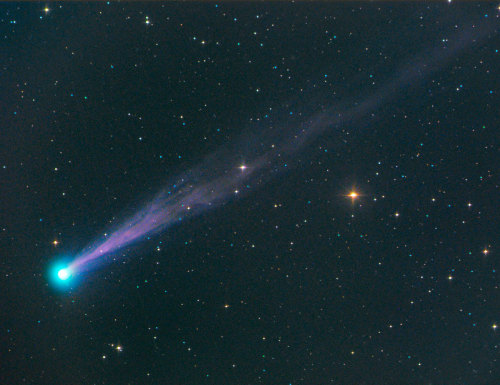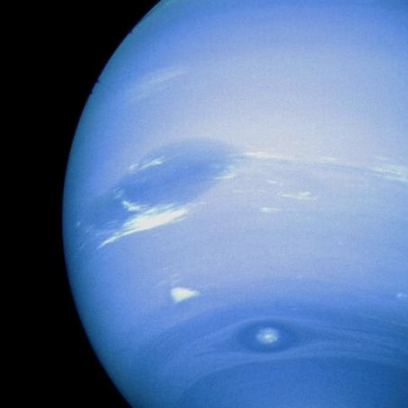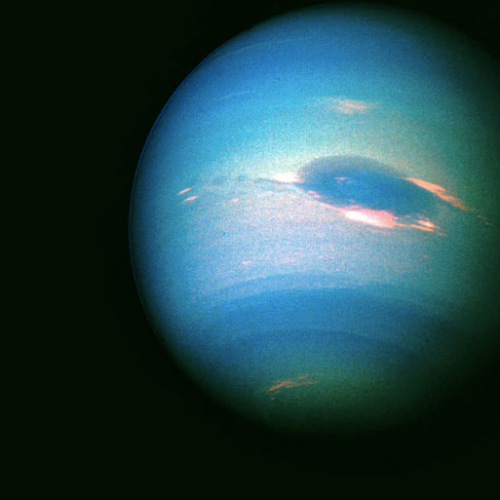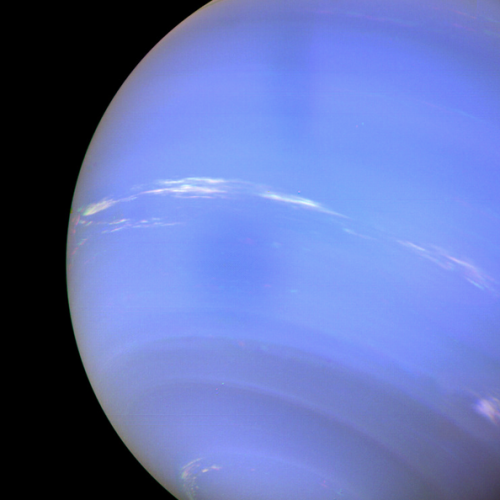Goregous :O
Goregous :O
WANT MORE? GET YOUR HEAD STUCK IN THE STARS AT MY BLOG!

Comet Swan
More Posts from Acosmicgeek and Others
Neptune!
Mercury will always be my favorite planet (closest to the Sun, underappreciated, proved Einstein’s general relativity, among other things) but I think Neptune’s the most beautiful. Look at that hue!
WANT MORE? GET YOUR HEAD STUCK IN THE STARS AT MY BLOG!






neptune.
You’re lying - those are way cooler than dumb fireworks!
I really don’t like fireworks. They’re environmentally damaging, loud, and they hide the stars!
So yeah, July 4th wasn’t too happy for me.
WANT MORE? GET YOUR HEAD STUCK IN THE STARS AT MY BLOG!

A camera on the Vosges mountains in France captured these surprising “fireworks” above the horizon. Generated over intense thunderstorms, these brief and mysterious flashes have come to be known as red sprites. The transient luminous events are caused by electrical breakdown at altitudes of 50 to 100 kilometers. That puts them in the mesophere, the coldest layer of planet Earth's atmosphere. The glow beneath the sprites is from lightening under the clouds.
On the right, the video frames have captured another summertime apparition from the mesophere. The silvery veins of light are polar mesospheric clouds. Also known as noctilucent or night shining clouds, the icy clouds still reflect the sunlight when the Sun is below the horizon. Image Credit & Copyright: Stephane Vetter (TWAN, Nuits sacrees)
So I actually did the calculations and the surface area of Jupiter could probably fit around 11,474,491,000,000 football fields.
Okay so I googled it and the radius of Jupiter is 43,441 miles. However, I’m going to convert that into meters, which’ll make that radius a cool 69,911,513 m. Next up I’ll plug that into the surface area of a sphere formula (A= 4πr^2) which will get us approximately 6.14 x 10^16 m^2 (or roughly 61,400,000,000,000,000 m^2).
Next, I found the area of one football field to be around 5,351 m^2. Dividing the surface area of Jupiter by the surface area of one football field, we can find out how many football fields will fit onto the surface of Jupiter. And that is 1.1474491 x 10^13. Calculating that, that will be 11,474,491,000,000 football fields (11 trillion or so). Oh boy.
For comparison’s sake, the universe is estimated to have AT MOST 2 trillion galaxies! Which means that Jupiter likely could fit more football fields than the universe has galaxies. Another example, there are an estimated billion trillion stars in the observable universe. Jupiter’s football fields account for half of the stars in our observable universe.
I actually tried to find out how many football fields were in the U.S. for comparison but I still can’t find a statistic.
But also that’s pretty hilarious xD
WANT MORE? GET YOUR HEAD STUCK IN THE STARS AT MY BLOG!

No WaY
We choose to go to the moon in this decade and do the other things, not because they are easy, but because they are hard, because that goal will serve to organize and measure the best of our energies and skills, because that challenge is one that we are willing to accept, one we are unwilling to postpone, and one which we intend to win.
John F. Kennedy
WANT MORE? GET YOUR HEAD STUCK IN THE STARS AT MY BLOG!
Can I go to Lake Thetis? Damn.
Florida’s got nothing on this place, I’m sorry.
WANT MORE? GET YOUR HEAD STUCK IN THE STARS AT MY BLOG!

Milky Way + Stromatolites - Lake Thetis, Western Australia
Nikon d5500 - 35mm - 9 x 13s - ISO 3200 - f/2.2
That’s gorgeous!
This picture right here is why I hate light pollution
WANT MORE? GET YOUR HEAD STUCK IN THE STARS AT MY BLOG!

The Galaxy Above : Have you contemplated your home galaxy lately? If your sky looked like this, perhaps you’d contemplate it more often! The featured picture is actually a composite of two images taken last month from the same location in south Brazil and with the same camera – but a few hours apart. The person in the image – also the astrophotographer – has much to see in the Milky Way Galaxy above. The central band of our home Galaxy stretches diagonally up from the lower left. This band is dotted with spectacular sights including dark nebular filaments, bright blue stars, and red nebulas. Millions of fainter and redder stars fill in the deep Galactic background. To the lower right of the Milky Way are the colorful gas and dust clouds of Rho Ophiuchus, featuring the bright orange star Antares. On this night, just above and to the right of Antares was a bright planet Jupiter. The sky is so old and so familiar that humanity has formulated many stories about it, some of which inspired this very picture. via NASA
It’s been two years, and I’ll never forget him.
I remember when I was little and I loved space, but I was worried that I would be too bored of the astrophysics area. Then I read Mr. Hawking’s book a Brief History of Time, and I fell in love.
Thanks, Stephie.
WANT MORE? GET YOUR HEAD STUCK IN THE STARS AT MY BLOG!

The world lost an amazing thinker today. Celebrated world-renowned physicist Stephen Hawking passed away in Cambridge on March 14th, 2018 (Pi Day), at age 76. Somehow, I think he would have found this to be very poetic.
Stephen William Hawking CH CBE FRS FRSA was an English theoretical physicist, cosmologist, author and Director of Research at the Centre for Theoretical Cosmology within the University of Cambridge.
Only two things are infinite, the universe and human stupidity, and I'm not sure about the former.
Albert Einstein
WANT MORE? GET YOUR HEAD STUCK IN THE STARS AT MY BLOG!
I love that
After my Life of Stars series I’ve been wanting to do one on galaxies. Maybe I will hmmmmm
WANT MORE? GET YOUR HEAD STUCK IN THE STARS AT MY BLOG!
Galaxies: Types and morphology
A galaxy is a gravitationally bound system of stars, stellar remnants, interstellar gas, dust, and dark matter. Galaxies range in size from dwarfs with just a few hundred million (108) stars to giants with one hundred trillion (1014) stars, each orbiting its galaxy’s center of mass.

Galaxies come in three main types: ellipticals, spirals, and irregulars. A slightly more extensive description of galaxy types based on their appearance is given by the Hubble sequence.

Since the Hubble sequence is entirely based upon visual morphological type (shape), it may miss certain important characteristics of galaxies such as star formation rate in starburst galaxies and activity in the cores of active galaxies.
Ellipticals

The Hubble classification system rates elliptical galaxies on the basis of their ellipticity, ranging from E0, being nearly spherical, up to E7, which is highly elongated. These galaxies have an ellipsoidal profile, giving them an elliptical appearance regardless of the viewing angle. Their appearance shows little structure and they typically have relatively little interstellar matter. Consequently, these galaxies also have a low portion of open clusters and a reduced rate of new star formation. Instead they are dominated by generally older, more evolved stars that are orbiting the common center of gravity in random directions.
Spirals

Spiral galaxies resemble spiraling pinwheels. Though the stars and other visible material contained in such a galaxy lie mostly on a plane, the majority of mass in spiral galaxies exists in a roughly spherical halo of dark matter that extends beyond the visible component, as demonstrated by the universal rotation curve concept.
Spiral galaxies consist of a rotating disk of stars and interstellar medium, along with a central bulge of generally older stars. Extending outward from the bulge are relatively bright arms. In the Hubble classification scheme, spiral galaxies are listed as type S, followed by a letter (a, b, or c) that indicates the degree of tightness of the spiral arms and the size of the central bulge.
Barred spiral galaxy

A majority of spiral galaxies, including our own Milky Way galaxy, have a linear, bar-shaped band of stars that extends outward to either side of the core, then merges into the spiral arm structure. In the Hubble classification scheme, these are designated by an SB, followed by a lower-case letter (a, b or c) that indicates the form of the spiral arms (in the same manner as the categorization of normal spiral galaxies).
Ring galaxy

A ring galaxy is a galaxy with a circle-like appearance. Hoag’s Object, discovered by Art Hoag in 1950, is an example of a ring galaxy. The ring contains many massive, relatively young blue stars, which are extremely bright. The central region contains relatively little luminous matter. Some astronomers believe that ring galaxies are formed when a smaller galaxy passes through the center of a larger galaxy. Because most of a galaxy consists of empty space, this “collision” rarely results in any actual collisions between stars.
Lenticular galaxy

A lenticular galaxy (denoted S0) is a type of galaxy intermediate between an elliptical (denoted E) and a spiral galaxy in galaxy morphological classification schemes. They contain large-scale discs but they do not have large-scale spiral arms. Lenticular galaxies are disc galaxies that have used up or lost most of their interstellar matter and therefore have very little ongoing star formation. They may, however, retain significant dust in their disks.
Irregular galaxy

An irregular galaxy is a galaxy that does not have a distinct regular shape, unlike a spiral or an elliptical galaxy. Irregular galaxies do not fall into any of the regular classes of the Hubble sequence, and they are often chaotic in appearance, with neither a nuclear bulge nor any trace of spiral arm structure.
Dwarf galaxy

Despite the prominence of large elliptical and spiral galaxies, most galaxies in the Universe are dwarf galaxies. These galaxies are relatively small when compared with other galactic formations, being about one hundredth the size of the Milky Way, containing only a few billion stars. Ultra-compact dwarf galaxies have recently been discovered that are only 100 parsecs across.
Interacting

Interactions between galaxies are relatively frequent, and they can play an important role in galactic evolution. Near misses between galaxies result in warping distortions due to tidal interactions, and may cause some exchange of gas and dust. Collisions occur when two galaxies pass directly through each other and have sufficient relative momentum not to merge.
Starburst

Stars are created within galaxies from a reserve of cold gas that forms into giant molecular clouds. Some galaxies have been observed to form stars at an exceptional rate, which is known as a starburst. If they continue to do so, then they would consume their reserve of gas in a time span less than the lifespan of the galaxy. Hence starburst activity usually lasts for only about ten million years, a relatively brief period in the history of a galaxy.
Active galaxy
A portion of the observable galaxies are classified as active galaxies if the galaxy contains an active galactic nucleus (AGN). A significant portion of the total energy output from the galaxy is emitted by the active galactic nucleus, instead of the stars, dust and interstellar medium of the galaxy.

The standard model for an active galactic nucleus is based upon an accretion disc that forms around a supermassive black hole (SMBH) at the core region of the galaxy. The radiation from an active galactic nucleus results from the gravitational energy of matter as it falls toward the black hole from the disc. In about 10% of these galaxies, a diametrically opposed pair of energetic jets ejects particles from the galaxy core at velocities close to the speed of light. The mechanism for producing these jets is not well understood.

The main known types are: Seyfert galaxies, quasars, Blazars, LINERS and Radio galaxy.
source
images: NASA/ESA, Hubble (via wikipedia)
-
 a-life-f-e-a-r-l-e-s-s liked this · 2 weeks ago
a-life-f-e-a-r-l-e-s-s liked this · 2 weeks ago -
 conseguir-tu-mirada reblogged this · 2 weeks ago
conseguir-tu-mirada reblogged this · 2 weeks ago -
 enciende-la-mente reblogged this · 2 weeks ago
enciende-la-mente reblogged this · 2 weeks ago -
 thefrostyshepard reblogged this · 3 weeks ago
thefrostyshepard reblogged this · 3 weeks ago -
 thefrostyshepard liked this · 3 weeks ago
thefrostyshepard liked this · 3 weeks ago -
 killerspinal reblogged this · 3 weeks ago
killerspinal reblogged this · 3 weeks ago -
 doppelganger-blog reblogged this · 1 month ago
doppelganger-blog reblogged this · 1 month ago -
 sacremntal liked this · 1 month ago
sacremntal liked this · 1 month ago -
 fad1d reblogged this · 1 month ago
fad1d reblogged this · 1 month ago -
 fad1d reblogged this · 1 month ago
fad1d reblogged this · 1 month ago -
 queer-ghosts liked this · 1 month ago
queer-ghosts liked this · 1 month ago -
 slut4peanuts reblogged this · 1 month ago
slut4peanuts reblogged this · 1 month ago -
 canogamzeli reblogged this · 2 months ago
canogamzeli reblogged this · 2 months ago -
 canogamzeli liked this · 2 months ago
canogamzeli liked this · 2 months ago -
 sassy-n-classy-chic reblogged this · 2 months ago
sassy-n-classy-chic reblogged this · 2 months ago -
 sassy-n-classy-chic liked this · 2 months ago
sassy-n-classy-chic liked this · 2 months ago -
 bonibonlupaltom liked this · 2 months ago
bonibonlupaltom liked this · 2 months ago -
 deveboyu reblogged this · 2 months ago
deveboyu reblogged this · 2 months ago -
 deveboyu reblogged this · 2 months ago
deveboyu reblogged this · 2 months ago -
 pofidikunicorn liked this · 2 months ago
pofidikunicorn liked this · 2 months ago -
 kayip-ay reblogged this · 2 months ago
kayip-ay reblogged this · 2 months ago -
 yeonhwa-net liked this · 2 months ago
yeonhwa-net liked this · 2 months ago -
 bellaelizabethsmith liked this · 2 months ago
bellaelizabethsmith liked this · 2 months ago -
 iltimass liked this · 2 months ago
iltimass liked this · 2 months ago -
 generousspirit liked this · 2 months ago
generousspirit liked this · 2 months ago -
 she-is-art-to-me liked this · 2 months ago
she-is-art-to-me liked this · 2 months ago -
 norageonlypancakes reblogged this · 2 months ago
norageonlypancakes reblogged this · 2 months ago -
 un-r-wuenscht reblogged this · 2 months ago
un-r-wuenscht reblogged this · 2 months ago -
 evreninyitikoglu liked this · 2 months ago
evreninyitikoglu liked this · 2 months ago -
 senkonusmanpc liked this · 2 months ago
senkonusmanpc liked this · 2 months ago -
 hiclikveheplik liked this · 2 months ago
hiclikveheplik liked this · 2 months ago -
 who-is-to-blame reblogged this · 2 months ago
who-is-to-blame reblogged this · 2 months ago -
 lumyaa reblogged this · 2 months ago
lumyaa reblogged this · 2 months ago -
 mydearandromeda reblogged this · 2 months ago
mydearandromeda reblogged this · 2 months ago -
 dengesizim reblogged this · 2 months ago
dengesizim reblogged this · 2 months ago -
 ruhumdakisaklicennet reblogged this · 2 months ago
ruhumdakisaklicennet reblogged this · 2 months ago -
 blues-nocturne liked this · 2 months ago
blues-nocturne liked this · 2 months ago -
 heartt-way reblogged this · 2 months ago
heartt-way reblogged this · 2 months ago -
 kafaminguzelligi reblogged this · 2 months ago
kafaminguzelligi reblogged this · 2 months ago -
 sirenbunie liked this · 2 months ago
sirenbunie liked this · 2 months ago -
 muttself reblogged this · 2 months ago
muttself reblogged this · 2 months ago -
 abbandonatoalcaos liked this · 3 months ago
abbandonatoalcaos liked this · 3 months ago -
 jana-mcl reblogged this · 3 months ago
jana-mcl reblogged this · 3 months ago -
 dingindim liked this · 3 months ago
dingindim liked this · 3 months ago -
 kuyruguolmayanavatar reblogged this · 3 months ago
kuyruguolmayanavatar reblogged this · 3 months ago -
 kuyruguolmayanavatar liked this · 3 months ago
kuyruguolmayanavatar liked this · 3 months ago -
 eight-lanes reblogged this · 3 months ago
eight-lanes reblogged this · 3 months ago -
 despondentpyres reblogged this · 3 months ago
despondentpyres reblogged this · 3 months ago -
 despondentpyres liked this · 3 months ago
despondentpyres liked this · 3 months ago

